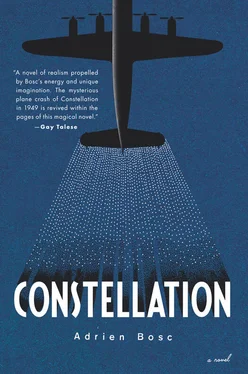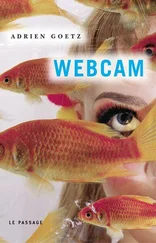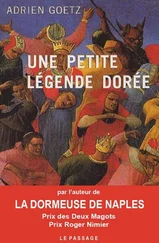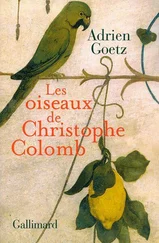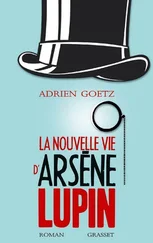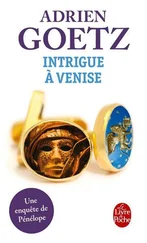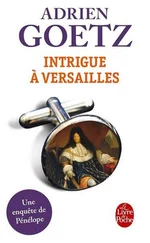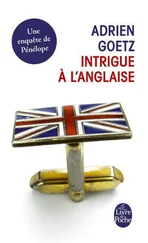Ginette Neveu’s voice, like Marcel Cerdan’s, is a paradox. Marcel, wrapped in a giant’s body, talks like a shy boy, stuttering, stumbling over his words, having to force the thin stream of his voice higher to be heard, he is a soprano. Ginette, a child-adult, projects her confidence, her certainty at having been chosen, in a deep voice, fixing you with her bottomless eyes, imposing rather than proposing, she is a contralto. Interrupted in the middle of the Bach Chaconne by the maestro George Enescu, who suggests that she replay a passage, she answers, “I do what I understand, not what escapes me.” In November 1930, at eleven, she is admitted to the National Conservatory of Music. She follows Jules Boucherit’s class for just eight months before receiving the first prize for violin, matching the feat achieved by Wieniawski. A year later, she enters her first international contest in Vienna against 250 violinists twice her age and reaches the finals. On the jury is Carl Flesch, who is so impressed by the child’s technique and inspiration that he leaves a message at the hotel for her mother: “If you can arrange to come to Berlin, I will undertake to look after the young violinist entirely pro bono.” It would take the family two years to find the money for the trip. In the meantime, Ginette meets Nadia Boulanger and, for her own amusement, composes three sonatas for solo violin, a capriccio, and the beginnings of a concerto for violin and orchestra. In March 1935, at sixteen, she comes to international attention by winning first prize in the Wieniawski Violin Competition, judged by David Oistrakh. After the award ceremony, she writes a letter to Mme Talluel:
My Dear Professor ,
I am rushing to announce to you the happy news: after taking first place in the first examination, I have just won first prize in the second round. I don’t need to tell you how happy this has made my mother and me too. Unfortunately, the rules oblige me to stay another month in Poland to give concerts. The session ended last night at 2 a.m., I played my concerto very well …
I have therefore received … wait for it … a diploma, a check, a silver cup that belonged to Wieniawski, and a strange violin that looks like a mandoline!!
Ginette Neveu is discovering the world. Between 1935 and 1939, she tours in Poland, the United Kingdom, throughout the USSR, and in Canada and the United States, everywhere drawing the same acclaim. She reportedly says: “Now I’m really going to have to work!”
Then comes the Phoney War, the French surrender, the cutting off of the occupied countries. Ginette goes into internal exile. She plays only the small concert halls in France’s southern Free Zone, and, despite lucrative offers from the Nazi government in Germany, she declines to play in Berlin and Stuttgart. During her impromptu tours through the French countryside, overnighting in train station hotels and sleeping berths, she is joined by her brother, Jean Neveu. As the one exception to her musical resistance movement, she accepts a concert at the Salle Gaveau on January 19, 1943, performing concertos by Bach, Beethoven, and Brahms. Her friendship with the composer Francis Poulenc dates from this concert, and he would later dedicate a sonata to her.
June 1944, the Allied landing. As the troops advance, Ginette performs more widely. Belgium is liberated, she goes to Brussels and gives a fiery concert. She then takes the first train to Switzerland, stopped at the border, she nonetheless slips in. A journalist for La Feuille d’avis de Lausanne accompanies her and tells the story:
At the border, a resourceful stationmaster couples a special car to the back of a freight train to allow these unexpected travelers to pass. The engineer, who can’t shake his surprise, gets out at every stop to make sure that his travelers are happy, entertains them with conversation, brings them newspapers. In this way, Ginette Neveu abruptly learns from a press report that a replacement has been found for her and that she won’t be playing at the Geneva Symphony Orchestra concert: they believe it will be impossible for her to get through. Revealing her identity, she leaps to the telephone at the next station, sets the record straight … and arrives in time .
A driving will, always.
In London, she falls ill, scarlet fever. For a month, an eon, she doesn’t play. One night, a V-2 rocket lands a few blocks from her building, right in Hyde Park. Recovered, she manages to appear at the Royal Albert Hall. Then she is in Brussels, staying in the private apartments of Queen Elisabeth of Bavaria, and in Ostend, where, backstage, she meets Maurice Chevalier. His account: “Big impression, few violinists have ever touched me so deeply, in my most secret fibers. From the first notes, you are electrified by her genius. She seems possessed by a demon!”
The magnetic presence of Ginette Neveu is captured in a performance of Chausson’s Poème , filmed in 1946 with the London Philharmonic Orchestra under the direction of Issay Alexandrovich Dobrowen. Chin held high, she takes a deep breath as though preparing to leap a hurdle. The bow slowly descends, lifts, while her fingers deliver a vibrato. Wearing a dress with puffy sleeves, Ginette rises at the center of the stage, her arm falls.

1947. South America by train. Rio de Janeiro, Montevideo, Manaus, Patagonia, Bogotá. She meets André Maurois. Then Mexico City, the United States — first Texas, Oklahoma, Utah — Canada, Carnegie Hall in New York City. On the flight home, at Christmastime, she improvises Ravel’s Tzigane on the harmonica for the other passengers, her best concert, she would say. The aircraft circles over Orly Airport, impossible to land; the Constellation makes an emergency landing near Orléans, in a disused field that still carries marks of the war. To occupy the passengers, the captain organizes a game: “What would you do if you had a magic lamp and it could grant you one wish?” Some wish for wealth, renown, success, eternal life, Ginette hopes she can spend Christmas in her family’s apartment on the square Delormel. A few hours later, her wish is granted.

On October 22, 1949, she goes with her mother to the rue Portalis, the Vatelot workshop. She is there to buy a Guadagnini, set aside for her by Marcel Vatelot, and to pick up her Stradivarius. From her intense playing style, the violin is subjected to excessive moisture, the young apprentice Étienne Vatelot, the luthier’s son, has the job of opening the instrument slightly. A few weeks earlier, Étienne was chosen to accompany Ginette on her tour of the United States. She asks him to wait a bit before joining her. She plans, she says in her deep voice, to preview her program in Saint Louis first, before starting the concert series she has lined up, and she won’t be available before November 10. Étienne has no reason to hurry and above all he doesn’t want to be in the way, knowing that, in his line of work, discretion is key. He delays his departure, trades in his October 27 airplane ticket for a transatlantic crossing on an ocean liner.
17. Bomber in a Cargo Plane
Plane accident kills boxer Marcel Cerdan. The press has thrown itself on his fresh corpse. “Get your photograph (20 francs) of the late Marcel Cerdan,” special edition — what a deal … what vomit … And tomorrow, unashamed, I’ll become a journalist again … because society gets the journalists it deserves.
— René Fallet, Carnets de jeunesse (Youthful notebooks)
In Paris, the daily papers mine the Azores saga until the seam peters out. After all the theories constructed, experts questioned, and stories spun about the expedition, there is the wait for the solemn funeral rites. Delays ensue, while the newspaper hacks fill their columns with statistics: 585,851 persons have crossed the Atlantic since 1945, in 20,205 flights back and forth. During the week of All Saints’ Day, the daily gazette includes a catalog of forgotten names, overthrown ministries, news snippets, anniversaries, and festivities. Front-page bulletins, news under exclamatory headlines, vignetted ads, photo essays, special editions, an amalgam of collaged papers that offers up, to the cries of the hawkers on the street and the roar of the rotary press, the exquisite corpse of the unstoppable progress of the world. At top speed, miniaturized and spooled on strips of microfilm, the news flashes by. From fast-forward, to enlargement, to fine focus, the events cross paths and coalesce, while the noise of the machine awakens the dead. Nineteen Breton sailors die in a storm, and we still have no news of three fishing vessels — Metalworkers take to battle stations on orders from their union — Another match between France and Yugoslavia ends in a tie (1–1), drawing sixty thousand spectators to Colombes, where the game is played without incident — In politics, Georges Bidault finally fills his cabinet — The hole-in-the-ceiling gang sets off an alarm and flees empty-handed, leaving two suitcases behind with 130 lbs. of tools: pry-bars, cold chisels, fuses, knotted ropes, rubber slip-ons, a set of jacks, screwdrivers, not to mention … their handy umbrella, for catching rubble when drilling through the floors — Louis Armstrong wows the audience at the Salle Pleyel — Promotional insert: “I am a secretary, and I have a good job. I owe it all to the professional training I received at the PIGIER secretarial school.” — A seaplane crashes in London: six deaths — The 63rd anniversary of the presentation of the Statue of Liberty, France’s gift to the United States — Two young scientists set out for Chad, M. and Mme Jean-Paul Leboeuf sailed from Bordeaux this morning for West Africa aboard the steamer Brazza . Commissioned by the Musée de l’Homme and the National Center for Scientific Research, they are traveling to the Chad region. They will take part in archaeological research to uncover the remains of ancient African civilizations — Book review: Maurice Nadeau on the subject of Robert Desnos: “He embodied the best aspect of surrealism: a furious hunger to achieve the impossible.” An unpublished letter from H. G. Wells to James Joyce: “Your last two works have been more exciting and amusing to write than they will ever be to read.” Who will be awarded the Prix Goncourt in 1949 — will it be Robert Merle for Week-end à Zuydcoote or Louis Guilloux for Le Jeu de patience ? — Advertisement: “Now that they have a choice, customers are more demanding. For breakfast, they want a quality brand with a long-established reputation … they want BANANIA, the exquisite chocolate-flavored breakfast beverage.” — Arrest of the alleged Setty murderer, this evening the London police arrested Brain Donald Hume as an accomplice in the murder of automobile dealer Stanley Setty, whose torso, missing its head and legs, was found five days ago in a marsh in Essex — On the silver screen, Roberto Rossellini’s Stromboli , with Ingrid Bergman, George Cukor’s Adam’s Rib (under the title Madame porte la culotte ), with Katharine Hepburn and Spencer Tracy, and, in its eighth week of box-office success, Retour à la vie (Return to Life ), with Bernard Blier, Louis Jouvet, and Serge Reggiani — It is a frigid All Saints’ Day, and flowers are expensive, the traditional visits to cemeteries began two days ago. At the Paris flower market and at stalls next to cemetery gates, the price of flowers has risen 15 to 30 percent over last year. Vendors complain about the drop in sales, but even a meager stem of chrysanthemums costs 200 francs.
Читать дальше
